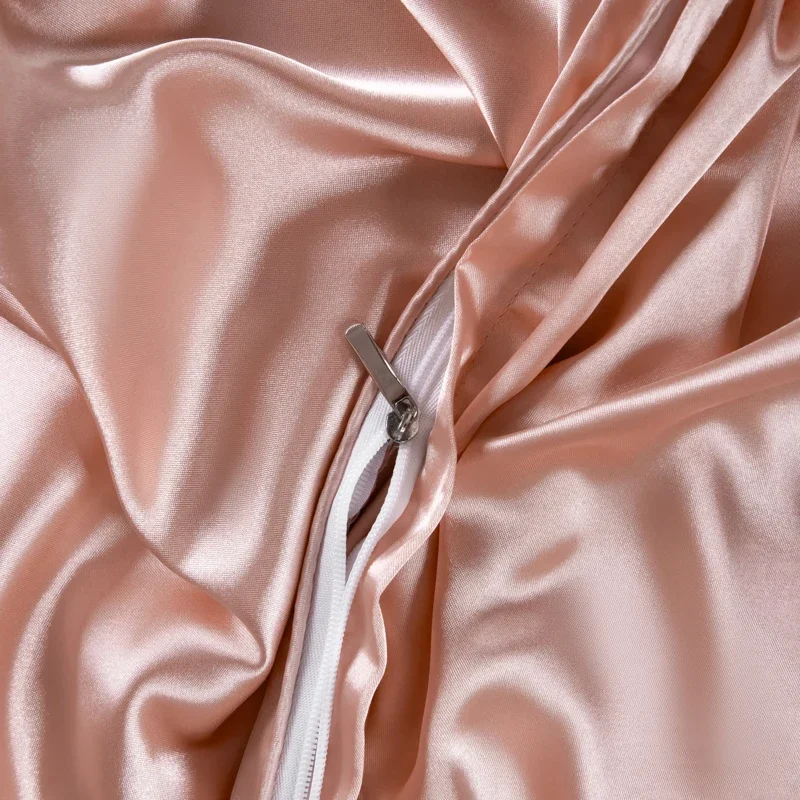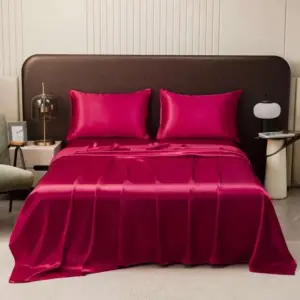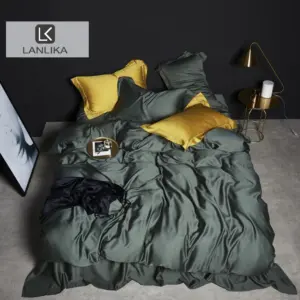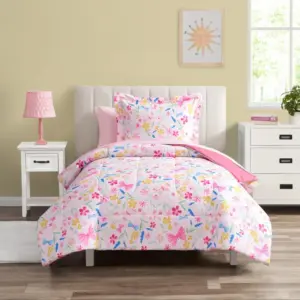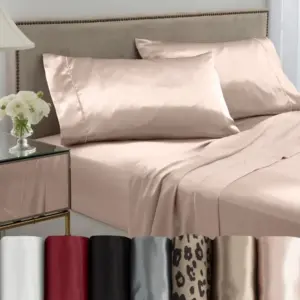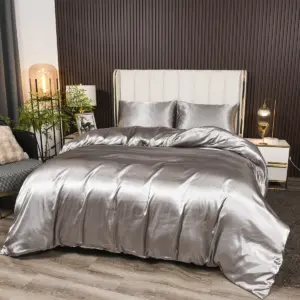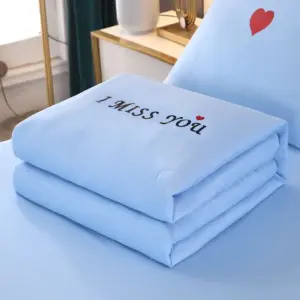Table of Contents
- Introduction to Silk Bedding
- Understanding Silk: Types and Quality Markers
- Decoding Momme Weight in Silk Bedding
- The Exceptional Benefits of Silk Bedding
- Essential Components of a Complete Silk Bedding Collection
- Comprehensive Care Guide for Silk Bedding
- How to Choose the Perfect Silk Bedding
- Silk vs. Other Premium Bedding Materials
- Addressing Common Questions About Silk Bedding
Introduction to Silk Bedding
Silk is a natural protein fiber produced by silkworms, specifically the larvae of the mulberry silkworm moth. For over 5,000 years, silk has been treasured as one of the world’s most luxurious textiles, starting as an imperial secret in ancient China before spreading throughout the world via the famous Silk Road trade routes. Today, comprehensive information about silk bedding reveals why this material continues to represent the pinnacle of sleep luxury.
What makes silk truly exceptional is its unique combination of properties. Unlike any other natural fiber, silk offers unparalleled smoothness against the skin while providing natural temperature regulation. It’s inherently hypoallergenic, making it ideal for sensitive sleepers. The protein structure of silk closely resembles human skin, which explains why it interacts so harmoniously with our bodies during sleep.
Transforming your bed with silk isn’t merely a decorative choice—it’s an investment in your wellbeing. Understanding what components make up complete silk bedding sets helps you appreciate the full scope of options available. From simple pillowcase upgrades to complete premium silk bedding collections, silk offers a sleep experience that’s both indulgent and beneficial.
Understanding Silk: Types and Quality Markers
Mulberry Silk: The Premium Standard
Mulberry silk stands as the gold standard in the world of luxury bedding. This exceptional material comes from domesticated silkworms (Bombyx mori) that feed exclusively on mulberry leaves. This specialized diet creates silk that’s remarkably consistent in color, texture, and quality.
What distinguishes mulberry silk is its exceptional smoothness and uniform appearance. The fibers are incredibly fine—measuring just 10-13 microns in diameter compared to human hair at 50-70 microns—creating an incredibly soft surface. Top-quality mulberry silk is graded on a scale where 6A represents the highest standard, with perfect uniformity and minimal imperfections.
The bedding made from premium mulberry silk offers unmatched luxury and durability. Each cocoon produces one continuous thread that can stretch up to 1,000 meters when properly unraveled, allowing for incredibly smooth fabric production.
Tussah/Wild Silk: The Natural Alternative
Tussah silk (sometimes called wild silk) comes from silkworms that live in natural forest habitats rather than controlled environments. These silkworms feed on a varied diet of oak, juniper, and other leaves, resulting in silk with distinctive natural characteristics.
Unlike the perfect uniformity of mulberry silk, tussah silk features subtle color variations and a slightly coarser texture. Many appreciate these natural imperfections as they add character and a more organic feel to the bedding.
Important Silk Weaves for Bedding
The weaving technique significantly impacts how silk bedding feels and performs:
Charmeuse: The most popular weave for luxury bedding, featuring a smooth, satin-like face and a more textured back. This construction creates the perfect balance of smoothness and durability.
Habotai: A lightweight, plain weave that’s less expensive but not as durable for regular bedding use.
Crepe de Chine: Features a slightly textured surface with a matte appearance, offering a different aesthetic than the typical glossy silk look.
Silk Processing and Production Quality
The production process greatly affects silk quality. Premium silk requires:
- Non-toxic, colorfast dyes that maintain silk’s natural properties
- Single-strand extraction techniques that preserve fiber integrity
- Minimal chemical processing to retain silk’s natural benefits
Understanding detailed information about silk quality measurements helps consumers make informed decisions when investing in luxury bedding.
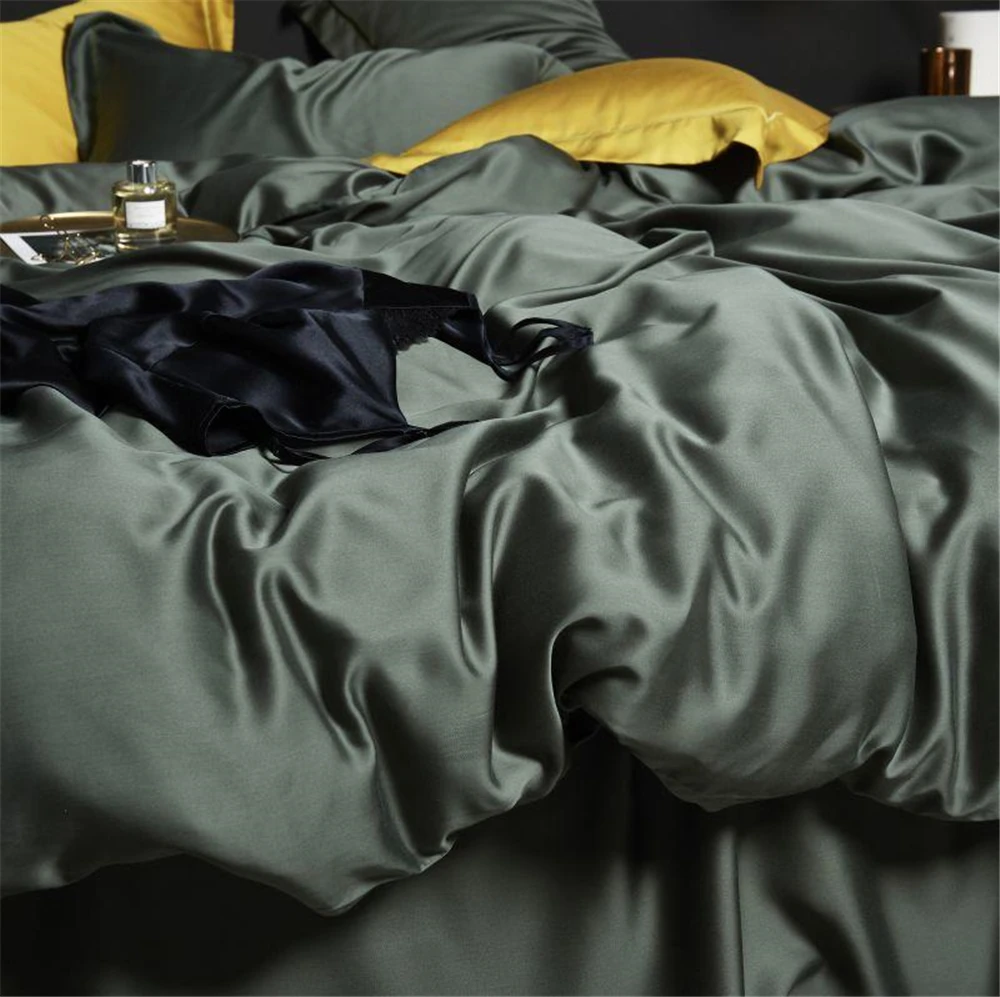
Decoding Momme Weight in Silk Bedding
Momme (pronounced “moe-mee”) weight serves as the traditional Japanese measurement for silk density and quality. Unlike cotton’s thread count, momme weight measures the fabric’s weight in pounds per 100 yards of material that’s 45 inches wide. This measurement provides a much more accurate indicator of silk quality and durability.
Understanding the foundational knowledge about silk bedding characteristics includes recognizing appropriate momme weights for different items:
| Momme Range | Best For | Characteristics |
|---|---|---|
| 12-16 | Linings, scarves | Lightweight, semi-transparent |
| 16-19 | Lighter bedding | Soft, moderately durable |
| 19-22 | Pillowcases, sheets | Balanced luxury and durability |
| 22-25 | Premium sheets, duvet covers | Substantial feel, excellent durability |
| 25-30 | Duvet covers, decorative items | Heaviest, extremely durable |
For most bedding applications, the sweet spot falls between 19-25 momme. This range offers the perfect balance of luxurious drape and long-term durability. Bedding below 19 momme may feel delightful initially but typically won’t withstand regular use over time. Anything above 25 momme provides exceptional durability but might feel slightly heavier and less fluid.
When shopping for silk bedding, remember that higher momme weight generally corresponds to higher price points—but also to longer-lasting products. The additional silk material in higher momme fabrics creates a more substantial hand feel and better resistance to wear over time.
The Exceptional Benefits of Silk Bedding
Transformative Skin Benefits
Silk’s incredibly smooth surface creates significantly less friction against your skin compared to other fabrics. This reduced friction means fewer sleep creases and wrinkles upon waking. The fabric’s protein structure, which contains 18 essential amino acids, works in harmony with human skin.
Unlike cotton and synthetic materials that can absorb moisture from your skin, silk maintains optimal hydration levels. This natural moisture balance proves particularly beneficial for those with dry skin conditions. Many dermatologists recommend silk bedding for patients with sensitive skin conditions like eczema, rosacea, and acne because it reduces irritation and doesn’t harbor as many potential irritants.
The beneficial properties of silk for skin health make it an investment in both comfort and skincare.
Revolutionary Hair Care
Silk’s smooth surface significantly reduces hair breakage and frizz by minimizing friction as you move during sleep. Unlike cotton, which can create resistance against hair strands, silk allows hair to glide smoothly across the pillowcase surface.
For those who invest time styling their hair, silk pillowcases help preserve hairstyles overnight. The fabric’s structure also helps maintain your hair’s natural moisture balance by not absorbing natural oils and products the way more absorbent fabrics do. Many people notice reduced morning bedhead and easier styling after switching to silk pillowcases.
Natural Temperature Regulation
One of silk’s most remarkable qualities is its ability to adapt to your body’s needs. The thermal properties of silk bedding make it uniquely comfortable year-round. In warmer weather, silk feels refreshingly cool against the skin while efficiently wicking away moisture. During colder months, silk’s natural protein structure creates tiny air pockets that provide insulation without weight.
Silk can absorb up to 30% of its weight in moisture without feeling damp, making it ideal for those who experience night sweats or live in humid climates. This natural temperature regulation helps maintain comfortable sleeping conditions regardless of seasonal changes.
Hypoallergenic Properties
Silk naturally resists common allergens that can disrupt sleep. The tight weave and protein structure make it inhospitable to dust mites, which are a primary trigger for many allergy sufferers. Unlike synthetic fabrics that can trap allergens, silk’s natural fibers create a cleaner sleep environment.
The minimal chemical processing of high-quality silk also means fewer potential irritants for sensitive individuals. Many people with allergies, asthma, or sensitive skin report significantly improved sleep quality after switching to silk bedding.
Enhanced Sleep Quality
The combination of temperature regulation, reduced friction, and hypoallergenic properties contributes to noticeably improved sleep quality for many users. The gentle, soothing feel of silk against the skin creates a luxurious sleeping environment that promotes deeper, more restful sleep.
Many users report fewer sleep disturbances from overheating and reduced skin and hair issues that might otherwise cause discomfort. This comprehensive approach to comfort makes silk bedding a holistic sleep solution rather than simply a luxury upgrade.
Essential Components of a Complete Silk Bedding Collection
Silk Pillowcases: The Gateway to Silk Bedding
Silk pillowcases typically serve as many people’s introduction to silk bedding because they offer immediate benefits with a relatively modest investment. Available in standard, queen, and king sizes, quality silk pillowcases feature:
- Hidden zipper or envelope closures to keep pillows securely in place
- Reinforced seams for durability despite regular use
- Usually 19-22 momme weight for optimal balance of luxury and longevity
The direct contact with your face and hair makes silk pillowcase options particularly beneficial for skin and hair health, delivering noticeable results within just a few nights.
Silk Sheets and Fitted Sheets
Complete silk sheet collections elevate the sleep experience by surrounding your entire body with silk’s benefits. Key features include:
- Deep pocket designs (typically 15-18 inches) to accommodate various mattress heights
- Fully elasticized fitted sheets to prevent slipping during the night
- Strategic reinforcement at stress points for extended durability
Silk sheets provide whole-body benefits, from temperature regulation to reduced skin irritation across all contact points.
Silk Duvet Covers
Silk duvet covers transform even ordinary duvets into luxury sleep experiences. Quality designs include:
- Interior corner ties to secure the duvet insert and prevent shifting
- Hidden closures (buttons, ties, or zippers) for a clean aesthetic
- Reinforced edges to maintain structure through washing and use
As the largest visible bedding component, duvet covers often feature rich colors and elegant sheen that enhance the bedroom’s overall aesthetic.
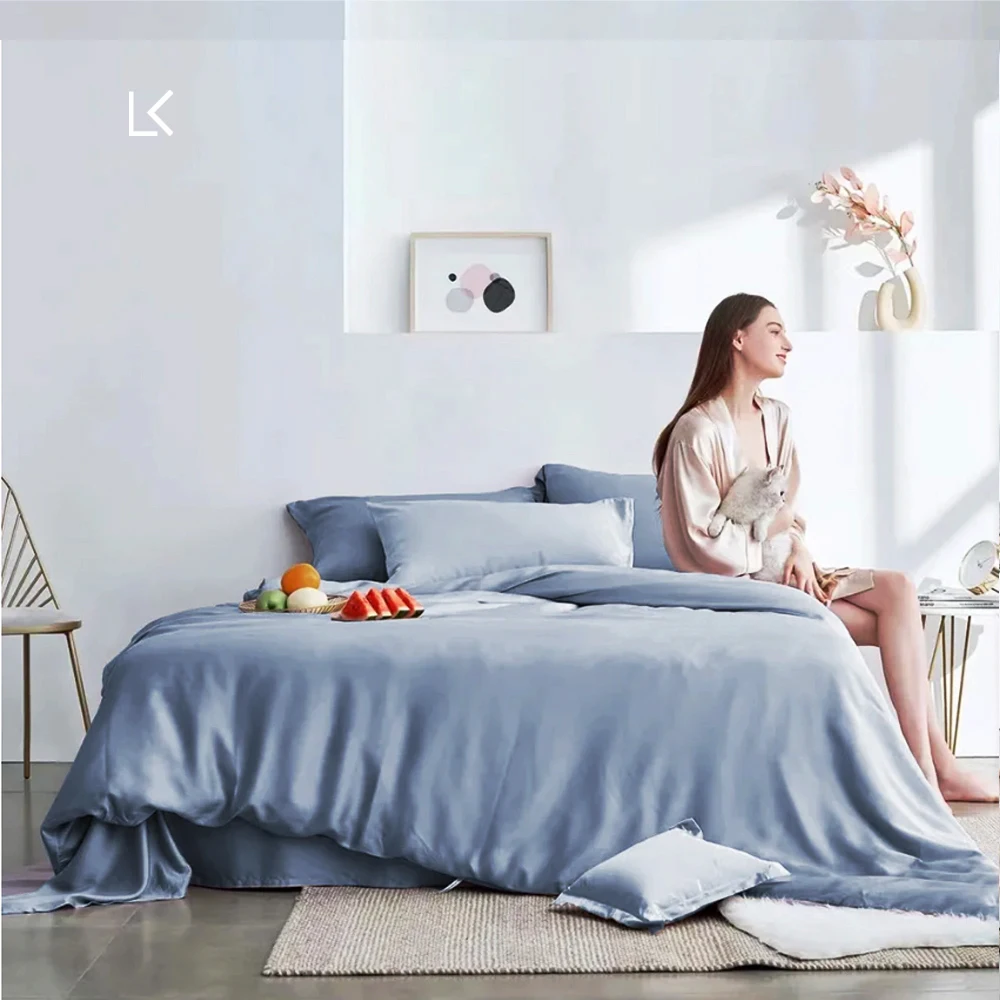
Silk-Filled Comforters/Duvets
Beyond silk coverings, silk-filled comforters offer exceptional sleep benefits:
- Mulberry silk floss fill provides natural temperature regulation
- Available weights range from lightweight summer options (7-9 ounces per square yard) to warmer all-season versions (11-13 ounces)
- Quality construction methods include baffle box (creating maximum loft) or channel designs
Silk-filled comforters adapt remarkably to body temperature, preventing overheating while maintaining cozy warmth.
Complementary Silk Sleep Accessories
Complete the luxury sleep experience with accessories like:
- Silk sleep masks that protect delicate eye areas
- Travel pillowcases for maintaining skin and hair benefits while away from home
- Silk throw blankets for additional layering options
These smaller items make excellent introductions to silk bedding or thoughtful gifts.
Full-size Silk Sheets, King Size Silk Sheets, Queen Size Silk Sheets, Twin Size Silk Sheets, Washable Silk Sheets
Price range: $95.95 through $178.37 Select options This product has multiple variants. The options may be chosen on the product page100% Silk Sheets, Green Silk Sheets, King Size Silk Bedding Set, Mulberry Silk Bedding Sets, Queen Size Silk Bedding Set
Price range: $1,246.21 through $1,615.22 Select options This product has multiple variants. The options may be chosen on the product pagePink Silk Sheets, Twin Size Silk Sheets
$171.80 Select options This product has multiple variants. The options may be chosen on the product pageFull-size Silk Sheets, Pink Silk Sheets
$136.31 Select options This product has multiple variants. The options may be chosen on the product pageGrey Silk Sheets, Silk Sheet and Pillowcase Set
Price range: $88.20 through $146.64 Select options This product has multiple variants. The options may be chosen on the product pageBamboo Silk Sheets, Cooling Silk Sheets
Price range: $130.76 through $177.80 Select options This product has multiple variants. The options may be chosen on the product page
Comprehensive Care Guide for Silk Bedding
Proper care dramatically extends the lifespan of your silk bedding investment, allowing quality pieces to last 10+ years with appropriate maintenance.
Pre-Washing Preparation
Before washing silk bedding:
- Test for colorfastness by dabbing a hidden area with a damp white cloth
- Sort items by color (especially new items that might release dye)
- Remove jewelry that could snag delicate fibers
- Check for any spots that might need pre-treatment
Washing Options and Techniques
Hand Washing (Safest Method)
1. Fill a basin with lukewarm water (max 30°C/86°F)
2. Add a small amount of silk-specific or mild detergent
3. Gently agitate without rubbing or wringing
4. Soak for no more than 5 minutes
5. Rinse thoroughly with clean water until no soap remains
Machine Washing (When Necessary)
1. Use a mesh laundry bag to protect silk items
2. Select delicate/silk cycle with cold water
3. Use silk-specific detergent (avoid enzymes, brighteners, and bleach)
4. Remove promptly when cycle completes
Drying and Finishing
- Never wring silk—instead, gently press between clean towels
- Air dry flat on a clean towel away from direct sunlight
- Avoid hanging wet silk as it may stretch
- For slight wrinkles, use an iron on the lowest silk setting with items still slightly damp
- Always iron on the reverse side or use a pressing cloth between the iron and silk
Storage Best Practices
- Store fully dry in cool, dark places away from direct sunlight
- Avoid plastic bags which can trap moisture; use cotton storage bags
- Fold rather than hang long-term to prevent stretching
- Keep away from wood (especially cedar) which can discolor silk
- Consider adding acid-free tissue paper between folds for precious items
Spot Treatment for Common Issues
Water-Based Stains
1. Blot immediately (don’t rub)
2. Use a small amount of silk detergent diluted in lukewarm water
3. Gently dab affected area
4. Rinse by dabbing with clean water
Oil-Based Stains
1. Apply a small amount of cornstarch or talcum powder to absorb oil
2. Let sit for several hours or overnight
3. Brush away powder gently
4. Wash according to regular instructions if needed
How to Choose the Perfect Silk Bedding
Making informed decisions when selecting complete silk bedding ensures you’ll enjoy the benefits of this luxury investment for years to come.
Authenticity Verification
Genuine silk should have:
- OEKO-TEX or similar certifications confirming safety standards
- A distinctive, soft sheen that changes subtly in different lighting
- A cool, smooth feel initially that quickly warms to body temperature
Simple home tests include the burn test (real silk burns with a smell similar to burning hair and turns to ash) and the ring test (genuine silk can be pulled through a wedding ring when bundled).
Quality Assessment Criteria
When evaluating silk bedding quality:
- Choose appropriate momme weight for each item (19-22 for pillowcases, 19-25 for sheets)
- Examine seams for tight, even stitching with no loose threads
- Check that patterns align properly at seams
- Look for French seams or other enclosed construction that prevents fraying
Color and Design Considerations
For the best silk bedding aesthetics:
- Understand that natural undyed silk has an ivory or champagne tone
- Check dyed silk for colorfastness certification
- Recognize that darker colors typically show more sheen
- Consider reversible options for versatility
Budget and Value Assessment
Silk bedding represents a significant investment, with typical price ranges:
- Quality silk pillowcases: $80-150 per pair
- Queen-sized silk sheet sets: $350-800
- Silk duvet covers: $300-700
Prioritize investment in items with direct skin contact (pillowcases, fitted sheets) if working with a limited budget. The 100% pure silk sheet options provide the most complete benefits.
Evaluating Retailer Reputation
Trustworthy silk providers will:
- Clearly specify momme weight and silk type
- Provide detailed care instructions
- Offer transparent return policies
- Answer specific questions about production methods
- Have detailed product descriptions and honest customer reviews
Silk vs. Other Premium Bedding Materials
Understanding how silk compares to traditional cotton alternatives helps justify its premium pricing.
Silk vs. Egyptian Cotton
While both are premium natural fibers:
- Texture: Silk offers a smooth, fluid drape; cotton provides a crisp, structured feel
- Moisture Management: Silk wicks moisture away; cotton absorbs it (up to 27% of its weight)
- Temperature Regulation: Silk naturally adjusts to body temperature; cotton tends to hold heat
- Maintenance: Silk requires gentle washing; cotton tolerates more aggressive cleaning
- Longevity: With proper care, both last 10+ years, though silk maintains its luxurious feel longer
Silk vs. Polyester Satin
Though they may look similar at first glance:
- Composition: Silk is a natural protein fiber; satin is a weave typically made from petroleum-based polyester
- Breathability: Silk allows natural airflow; polyester tends to trap heat and moisture
- Skin Benefits: Silk contains amino acids beneficial to skin; polyester offers no nutritive properties
- Environmental Impact: Silk is biodegradable; polyester can take centuries to decompose
- Price: Quality silk costs significantly more than even premium polyester satin
Silk vs. Bamboo Lyocell
As two popular eco-friendly options:
- Processing: Silk undergoes minimal processing; bamboo requires extensive chemical treatment to become lyocell
- Feel: Silk has a distinctive smooth, dry hand; bamboo lyocell feels cool and slightly more substantial
- Durability: Silk typically outlasts bamboo lyocell with proper care
- Moisture Management: Both excel at moisture wicking, with bamboo having slightly higher absorption
- Price Point: Quality silk generally costs more than comparable bamboo products
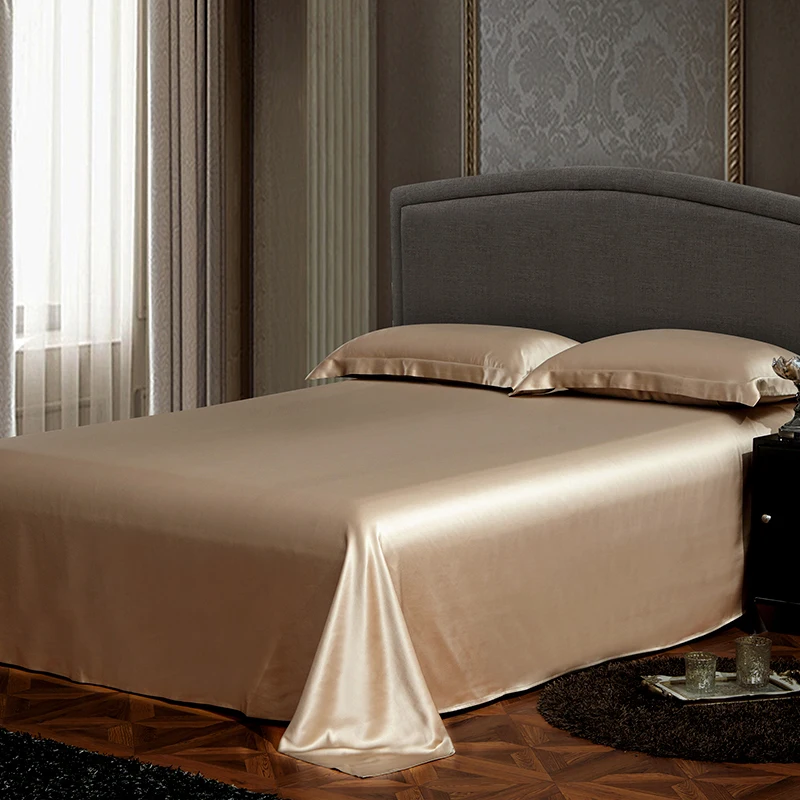
Addressing Common Questions About Silk Bedding
Is silk bedding worth the investment?
The value of silk bedding becomes apparent when considering its longevity and multifaceted benefits. Quality silk bedding lasts 10+ years with proper care—significantly longer than most alternatives. The skin, hair, and sleep benefits provide daily value beyond mere aesthetics. While the initial investment is higher, the cost-per-use often proves lower than repeatedly replacing lower-quality bedding.
Does silk bedding require professional cleaning?
Contrary to popular belief, most silk bedding can be cared for at home. Hand washing is always safest, but many modern silk bedding items can be machine washed on gentle cycles using appropriate detergents. Always follow the manufacturer’s specific care instructions, as finishes and dyes may affect washing requirements.
Will silk sheets slide off my bed?
Quality silk fitted sheets feature fully elasticized edges and deep pockets specifically designed to stay in place. While silk’s smooth texture does create less friction than cotton, properly fitted silk sheets should remain securely in position throughout the night.
Can silk bedding work year-round?
Silk’s natural temperature-regulating properties make it one of the most versatile bedding materials across seasons. Its protein structure creates cooling effects in summer while providing insulation in winter. Many users find silk to be the most comfortable option regardless of season, especially when layered appropriately.
How can I verify I’m buying authentic silk?
Beyond reputation and price (authentic silk is never cheap), several simple tests can verify authenticity. The burn test involves burning a small thread—real silk smells like burning hair and creates ash, while synthetics melt. The water test works because water droplets remain visible on real silk’s surface rather than immediately absorbing.
Is silk bedding environmentally friendly?
Traditional silk production has a lower environmental impact than many synthetic alternatives. The silkworms feed on renewable mulberry leaves, and the finished product is completely biodegradable. Some manufacturers now offer peace silk or vegan alternatives with even more sustainable practices. Like all natural fibers, silk’s environmental footprint depends largely on production methods.
What’s the typical lifespan of silk bedding?
With proper care, high-quality silk bedding typically lasts 10-15 years before showing significant wear. This longevity makes silk an excellent long-term investment compared to cotton (5-7 years) or synthetic options (2-3 years). Many Sanctuary Soft customers report their silk bedding maintaining beautiful condition even after a decade of regular use.

